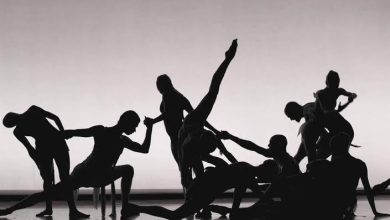Universities With The Lowest Cut-Off Marks For Fine art In Nigeria
Are you trying to find the list of Nigerian universities with the lowest cut-off mark required to get admitted to the fine art programs? Read on to know Nigeria Universities with the lowest cut-off mark.
If you want to pursue a career in fine art but are unsure about the most recent jamb cutoff mark for a course like fine art.Here is a list of Nigerian institutions that have cut-off mark that we have verified; it is the lowest of all the universities in Nigeria that provide fine art programs.
READ ALSO: List Of Universities That Has Lowest Cut-off Mark For Genetics and Biotechnology
Universities With The Lowest Cut-Off Marks For Fine art In Nigeria

To gain admission into an fine art program at a Nigerian university, meeting the cut-off mark for the subject is essential. The following universities have some of the lowest cut-off marks for fine art.
1. Delta State University, Abraka (DELSU)
Cut off mark: 180
It is commonly referred to as DELSU, which stands for Delta State University, Abraka. This university is controlled by the state government of Nigeria, and its main campus is situated in Abraka, Delta State. Additionally, the university has a sub-campus near Oleh. The Amended Edict of 1995 was the impetus for the establishment of the Oleh campus.Both of the university’s campuses are located within a radius of around 52 km from one another, making it a multiple-campus institution. At the moment, the university has a student population of approximately 22,000 (during the 2019/2020 session), and it provides a variety of programs, ranging from full-time certificate, diploma, and degree programs to part-time evening and weekend degree programs.Diplomatic and Postgraduate Studies at DELSU are available up to the PhD level. DELSU is the owner of a number of different infrastructures, including a staff and student counselling facility, an e-learning centre, student housing, and sporting facilities. One of the more than twenty-five universities that are owned by the state and are supervised and accredited by the National Universities Commission is this particular institution.
2. Federal University, Ndufu Alike, Ikwo (AE-FUNAI)
Cut off mark: 170
There is a Nigerian higher education institution known as the Alex Ekwueme Federal University Ndufu-Alike, Ebonyi State (AE-FUNAI) that can be found in the Ndufu-Alike Ikwo neighbourhood of Ebonyi State.To begin, it was founded in the year 2011.The numbers Federal University Ndufu Alike Ikwo was the official name of the institution until February 2, 2018, when the Federal Government decided to rename it in honour of Dr. Alex Ekwueme, who had served as the civilian Vice President of Nigeria prior to his recent passing. There is a total land area of 438 hectares that the University occupies. The University has a total population of 10, 000 students and 2, 230 staff members, respectively.
3. Federal University Of Technology Owerri(FUTO)
Cut off mark: 160
FUTO, which stands for the Federal University of Technology in Owerri, is one of the most competitive universities in Nigeria. Many students who are interested in engineering are interested in attending this university. It was founded in 1980 and is situated in Ihiagwa, which is located in the state of Imo.
It is due to her exceptional achievement and the impact that she has had on society that the Federal University of Technology in Owerri is considered to be among the ranking universities.
4. University of Nigeria Nsuka (UNN)
Cut off mark: 180
The University of Nigeria, Nsuka is not only one of the most famous educational institutions in Nigeria, but it is also one of the most competitive.
On October 7, 1960, it was finally opened to the public after being discovered by Nnamdi Azikiwe in the year 1955.
Approximately two or more campuses are managed by the University of Nigeria Nsuka. According to the benchmark established by the Joint Admission Board, the minimum pass score is 140. To be on the safe side, a score of 180 or above is required for courses with a low level of competition, while a score of 200 is required for courses with a greater level of competition.
It is dependent on the overall performance of the applicants in a quota that is provided by the heads of departments that the departmental cutoff point is different.
In order to determine her minimum score, the University of Nigeria employs a ratio of sixty to forty.
READ ALSO: List Of Universities That Has Lowest Cut-off Mark For Economics
FAQS
What do fine art mean?
The performing arts and the visual arts, which are frequently referred to as the fine arts, are two parts of the educational curriculum that are separate from one another and are of great importance. “For the purpose of developing these curricular areas, we define the fine arts as including the visual arts, dance, music, and theatre,” the official statement states.
What is the total number of years required to earn a Bachelor of Fine Arts degree?
four years in total
However, due to the large amount of studio course work that is required, the amount of time it takes to complete a Bachelor of Fine Arts program might vary from shorter to longer than average. The Bachelor of Fine Arts degree is typically considered to be a degree that is earned after four years of study. After the student has finished with this degree, they have the opportunity to pursue further education and get a postgraduate degree because: A master’s degree in the fine arts field.
What is the word”fine arts” all about?
An undergraduate degree known as a Bachelor of Fine Arts (BFA) degree is designed to educate students about the history, skills, techniques, and industries associated with the artistic field that they have decided to pursue or are interested in. The five core areas of focus that are required for the Bachelor of Fine Arts degree are the visual arts, the performing arts (theatre and dance), the visual arts (film and photography).









